
- Home
- News
- Analysis
- States
- Perspective
- Videos
- Education
- Entertainment
- Elections
- World Cup 2023
- Features
- Health
- Business
- Series
- Economy Series
- Earth Day
- Kashmir’s Frozen Turbulence
- India@75
- The legend of Ramjanmabhoomi
- Liberalisation@30
- How to tame a dragon
- Celebrating biodiversity
- Farm Matters
- 50 days of solitude
- Bringing Migrants Home
- Budget 2020
- Jharkhand Votes
- The Federal Investigates
- The Federal Impact
- Vanishing Sand
- Gandhi @ 150
- Andhra Today
- Field report
- Operation Gulmarg
- Pandemic @1 Mn in India
- The Federal Year-End
- The Zero Year
- Premium
- Science
- Brand studio
- Home
- NewsNews
- Analysis
- StatesStates
- PerspectivePerspective
- VideosVideos
- Entertainment
- ElectionsElections
- Sports
- Loading...
Sports - Features
- BusinessBusiness
- Premium
- Loading...
Premium
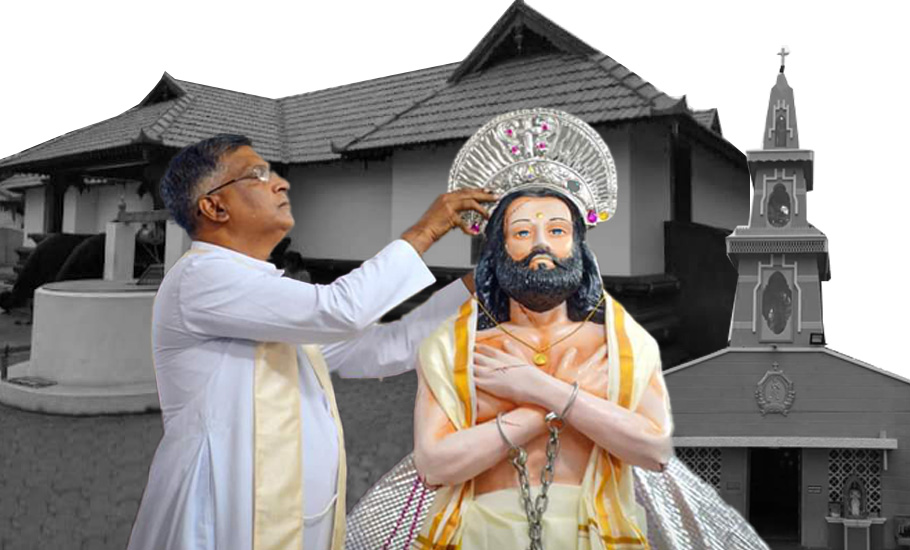
What Devasahayam Pillai’s sainthood means for Kanyakumari

The coastal city of Kanyakumari right at the tail end of India leads the country in many ways. For one, it is among the leading tourist destinations of the country and the top choice for those wanting to see sunrise and sunset over the ocean. Endowed with attractive tourist spots such as the Bhagavathy Amman Temple, Vivekananda Rock memorial, 133-feet Thiruvalluvar Statue and umpteen...
The coastal city of Kanyakumari right at the tail end of India leads the country in many ways. For one, it is among the leading tourist destinations of the country and the top choice for those wanting to see sunrise and sunset over the ocean. Endowed with attractive tourist spots such as the Bhagavathy Amman Temple, Vivekananda Rock memorial, 133-feet Thiruvalluvar Statue and umpteen historic churches, Kanyakumari has recently received what locals call as “one more blessing”.
On June 5, even as tourists who flocked to Kanyakumari found themselves engrossed in sightseeing and walking along the beaches, the local Christians, who comprise about 61 per cent of the population, thronged the churches in larger numbers than what was usual for Sundays.
The rush to the church was to participate in a ceremony organised by Kuzhithurai Diocese to express the district’s gratitude for canonising Blessed Devasahayam Pillai with sainthood.
On May 15, Pope Francis canonised Blessed Devasahayam and nine other new saints during the Canonisation Mass in St Peter’s Basilica that was attended by over 50,000 faithfuls from all over the world.
Devasahayam, a Hindu by birth, later converted to Christianity. Despite being born to a dominant community, he moved with people of depressed classes and earned their goodwill.
Having embraced Christianity, he spread Jesus Christ’s teachings among the people and succeeded in converting many people to Christianity, a move that he would later pay for with his life on January 14, 1752.
Close to 252 years later, Devasahayam was recommended for the process of beatification by the Vatican in 2004. Amid opposition from right-wing groups, which claimed that there was no evidence that religious persecution happened in Travancore Kingdom, Devasahayam was given the title of ‘Venerable/Blessed’ in 2012.
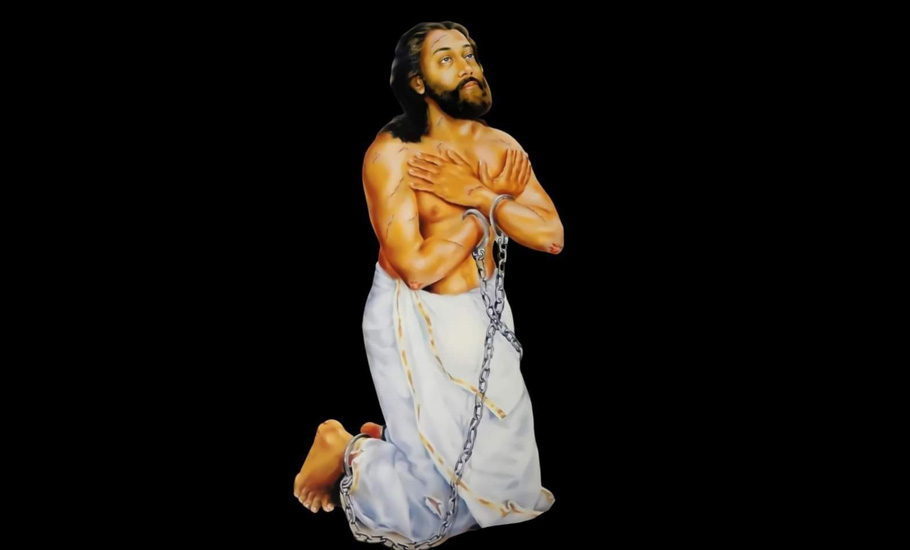
In 2020, the Pope acknowledged his miracle that paved the way for Devasahayam to get Sainthood, making him the first Indian layperson – meaning someone not associated with any role in the church or in any other religious institution–to be beatified with the title.
Christianity in India
The South of India was ruled by various kingdoms in ancient times. However, the triumvirate – Chera, Chola and Pandya kingdoms – had the most control. The Cheras ruled a small part of Tamil Nadu and a large part of Kerala between the 8th century AD and 12th century AD.
In the 17th and the 18th centuries, the region got divided into many smaller kingdoms. One such region was called the Kingdom of Travancore or Venad. In the 18th century, the kingdom was headed by Marthanda Varma. The Kanyakumari district was then a part of Travancore and Padmanabhapuram, a part of the district was the capital of the kingdom.
India at one point is said to have had maritime relationship with Palestine. It is claimed that before the Westerners came to the country through seas, some Jews reached here through land. That was how Saint Thomas, one of the 12 disciples of Jesus Christ, reached Kodungallur in Kerala in 52 AD. It is believed he built the St Mary’s Church located at Thiruvithamcode Arappally in Kaynakumari in 63 AD. It is one of the world’s oldest churches and now recognised as an international St Thomas centre. With St Thomas’s arrival, the first phase of Christianity emerged in the country. The followers of Thomas are known as Knanaya Christians.
This was followed by Latin Catholic, the second phase of Christianity, which started with the arrival of Vasco Da Gama in 1498. In the 18th century, due to the Renaissance movement in Europe, Protestantism was introduced in India as the third phase of the religion.
The Kanyakumari district, which was attached to Tamil Nadu in the 1950s following the state’s linguistic-based reorganisation, has a population of 61 per cent Christians, according to Census 2011, followed by Hindus and Muslims. Tamil Nadu itself has a Christian population of just 6 per cent.
The king’s man
Even as Christianity started to flourish in Travancore, caste atrocities unleashed by the dominant communities such as Nairs, the military elite and the ruling class, on the oppressed communities like Pulayars kept rising.
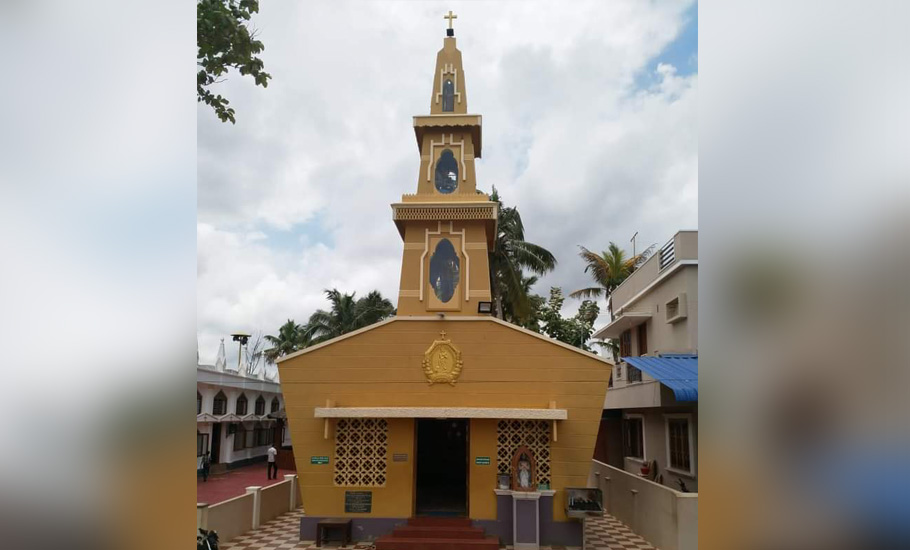
The discrimination was so deep that Dalit communities were not even allowed to worship Gods like Bhagwan Shiv and Bhagwan Vishnu, who came to be considered as God’s of the ruling classes. G Jayaseelan in his doctoral thesis on Devasahayam, Manam Maariya Marai Satchi, writes that Dalits were allowed to worship only local deities such as Sudalai Maadan.
It was in this milieu that priest Vasudevan Nambudiri and Devaki Ammal – the sister of Raman Pillai, who maintained the temple where Vasudevan was working – gave birth to Neelakanta Pillai on April 23, 1712 in Nattalam, a village in present-day Kanyakumari.
Neelakanta excelled in subjects like Tamil and Malayalam literature, sword and stick fighting and kalaripayattu, among others. At the age of 28, he joined Marthanda Varma’s government as an official. The period of Marthanda Varma (1729-1758) is considered to be the golden age for the Travancore Kingdom.
His academic knowledge and bravery won the king’s heart and the latter entrusted Neelakantan with many responsibilities, including the affairs of the army. Besides serving as the deputy commander of the army, Neelakantan also looked after the kingdom’s infrastructure. He played a major role in the construction of the Padmanabhapuram Palace.
Friendship with a war prisoner
The Battle of Colachel has an important place in the history of Travancore Kingdom. The war — fought between July 31, 1741 and August 10, 1741 — also proved to be a turning point in Neelakantan’s life. The war started after forces of the Dutch East India Company, led by Admiral Eustachius De Lannoy, declared war on Travancore. With the help of Mukkuvar community fishermen, the Travancore army won the battle and De Lannoy was forced to surrender.
Despite being a war prisoner, De Lannoy was treated respectfully and even tasked with modernising the Travancore army. It was he who introduced gunpowder and firearms to the force.
De Lannoy and his family were given a place to reside in the Udayagiri Fort in Kanyakumari. Neelakantan supervised the construction of the fort and it was during this time that De Lannoy and he became friends.
Whenever Neelakantan would visit the fort to see the progress of the construction, he saw De Lannoy praying to Jesus Christ on his knees. Driven by curiosity, Neelakantan enquired about the religion and life of Christ. This was his earliest brush with the faith.
‘A conversion of heart’
Although Neelakantan was happily married to Bhargavi Ammal, the couple didn’t have a child for many years. This made Neelakantan depressed. He shared his worry with De Lannoy one day.
After realising the agony Neelakantan was undergoing, De Lannoy is said to have prayed to Christ for Neelakantan. The prayer reportedly soothed Neelakantan. In the days that followed, he learnt more about Christ.
The discussions with De Lannoy on Jésus brought a change inside Neelakantan. He is said to have grown kinder and more helpful. As time progressed, Neelakantan decided to accept Christ as his God.
But the first roadblock came from his wife, who is said to have been shaken by the idea of Neelakantan’s conversion. Repeated cajoling and reasoning, however, made Bhargavi give in. With his wife’s consent, when Neelakantan told De Lannoy about his plans, the latter was left worried. He was concerned over how the local Hindus would view the decision.
If Neelakantan was to go ahead with his decision, social ostracism was guaranteed and there was also the fear of a loss of favour from the king.
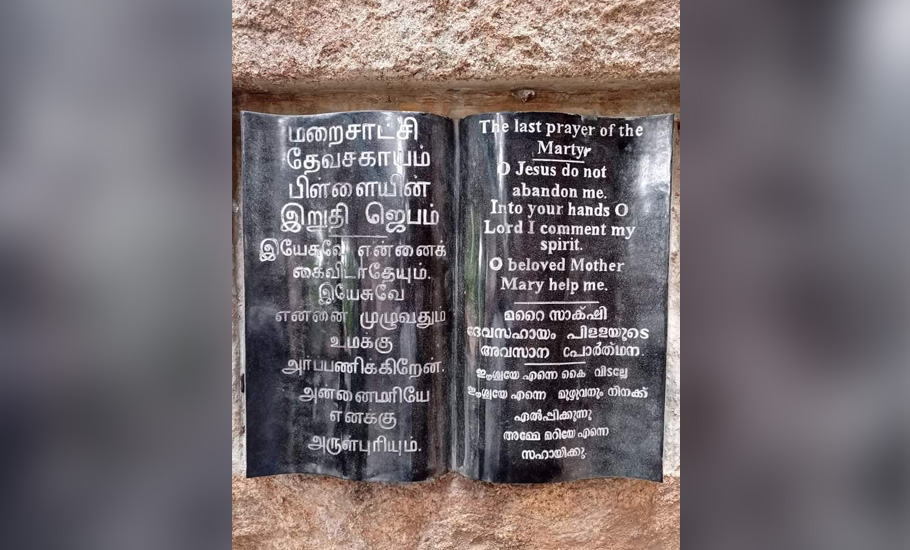
But as Neelakantan persisted, De Lannoy guided him to Fr Giovanni Battista Buttari, a Jesuit missionary residing in Vadakkankulam, a hamlet in present-day Tirunelveli district. After nine months of instruction in Catholic faith, Neelakantan was baptised in 1745. His name changed to Devasahayam, a Tamil version of the name Lazarus which means ‘God is my help’.
“No one compelled him to accept Christianity. He himself realised that he needed to follow the Lord. He was steadfast on his decision. Had he been pushed to convert by someone else, he would have embraced Christianity overnight. But he got an inner call. His mind realised that he should accept the Lord,” said Jayaseelan.
It is possible that because Devasahayam embraced Christianity of his own volition instead of any external compulsion, he is often called as ‘Manam Maariya Marai Satchi Devasahayam’ or ‘Veda Satchi Devasahayam Pillai’ (a Biblical witness of conversion of heart).
Impact of conversion
Following Neelakantan’s conversion, his wife Bhargavi Ammal too converted and came to be called Gnana Poo, a Tamil rendition of the name Theresa. Later, their relatives also got baptized.
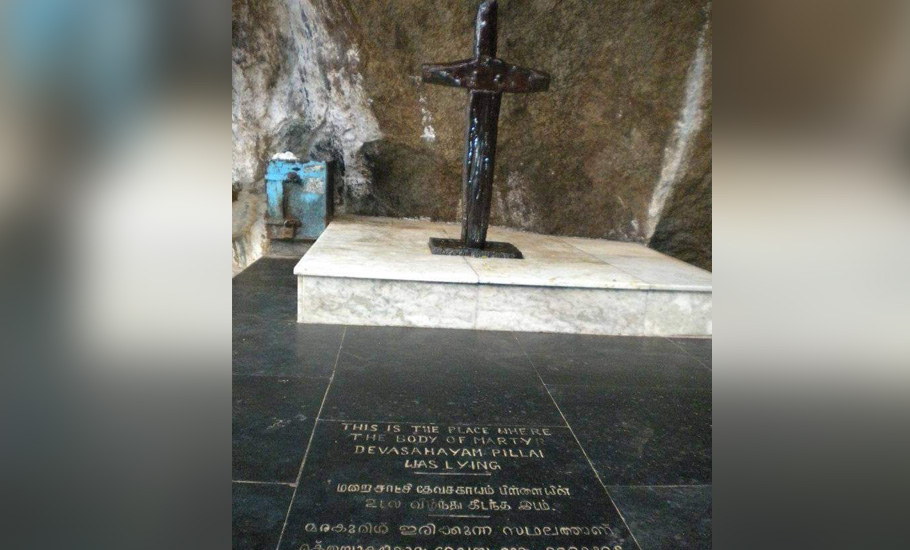
Devasahayam is said to have performed miracles like treating people with chronic ailments and infusing life into a dead foetus that had died inside the womb after hearing a pregnant woman’s prayers. Such stories of miracles drew more people, especially those from the oppressed classes, towards him.
Seeing his popularity grow and the interest in Christianity spread, some Hindu leaders accused Devasahayam of using his office to convert people. They also said he leaked the kingdom’s security intelligence to the Europeans. They then took their complaints to Ramayyan Dalawa, the dewan of Travancore.
Acting on the complaint, Devasahayam was stripped of his post and arrested in February 1749. During the three years that he stayed in prison, there was enormous pressure from the Europeans to release him. Finally, he was released and ordered to go into exile.
Before he was sent to the Aralvaimozhy forest, Devasahayam was subjected to public humiliation of various forms – he was made to ride a buffalo, beaten black and blue and denied both food and water.
On January 14, 1752, instead of allowing him to go into exile, the officials shot Devasahayam down. He had five wounds on his body akin to Jesus Christ’s wounds when he was crucified.
‘A change agent’
Devasahayam was not only a venerable saint but also a leader in his own sense who fought against the caste discrimination practised in Travancore Kingdom, says Kanyakumari-based Kumari Aathavan, a biographer of Devasahayam.
“There were about 108 kinds of taxes such as the moustache tax, the breast tax, etc levied on the oppressed classes in Travancore. That’s why even Swami Vivekananda went on to describe the region as a ‘lunatic asylum’.
Even before converting to Christianity, Devasahayam fought against such practices. After embracing Christianity, he attracted the depressed classes by allowing them into the church at a time their entry to temples was banned. This led to mass conversions from Hinduism to Christianity.
“In that sense, Devasahayam pioneered the temple entry movement,” says Aathavan, whose Tamil book on Devasahayam, Therkil Vizhundha Vidhai, has been translated into English and Malayalam, recently.
“It’s true that even after embracing Christianity, most people are unable to shed their caste identities. However, compared to other districts, in Kanyakumari, Christians practising discrimination within their fold is very low,” says Aathavan.
According to him, the recent canonisation of Devasahsyam with sainthood will increase tourism in the district.
Devasahayam is the first layman and also the first married man to get sainthood. His canonisation is thus significant for the Christians across the country.
“Before the sainthood, about 50 to 60 tourists were visiting the places related to Devasahayam. Now, the numbers have increased to thousands. Many come from Kerala and Karnataka,” adds Aathavan.
For many in the state trying to offset the ravages of Covid-19, that’s indeed a miracle in so many ways.

